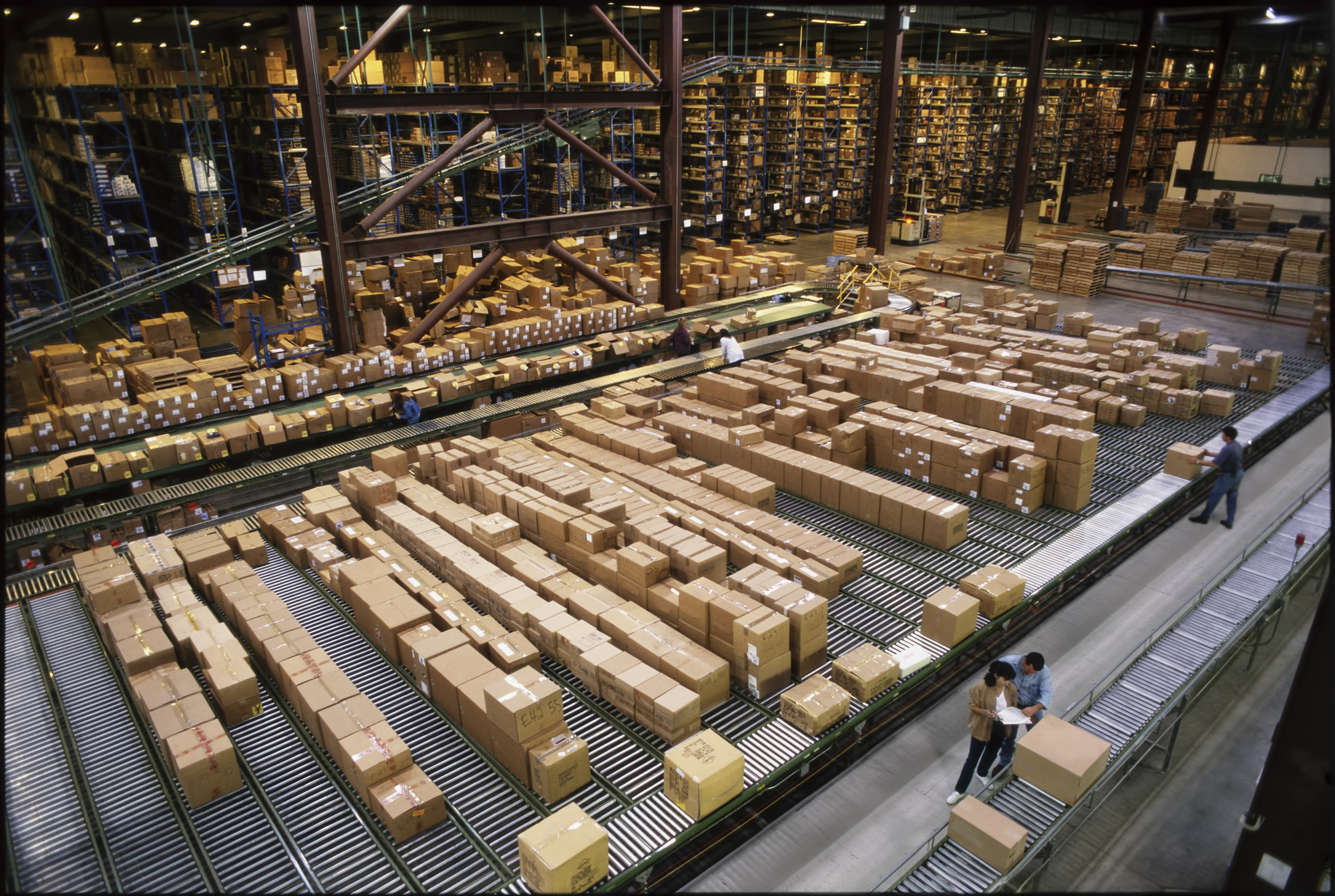Supply chains are no strangers to disruption, but the latest wave of tariff threats puts even more pressure on businesses worldwide. To make sense of it all, we sat down with Steve Johanson, Senior Vice President and Industry Principal for Network Optimization at AI-first supply chain provider Logility. We discussed the impact of tariffs, misconceptions to avoid, and how AI-powered modeling can help businesses stay ahead.
Supply Chain 24/7: How big of a disruption could new tariffs on China, Canada, and Mexico be for global supply chains?
Steve Johanson: They are significant. Supply chains always operate with a level of uncertainty. Unlike sudden crises, like the Suez Canal blockage, tariffs usually come with some degree of advanced warning. They can also change, and there can be indirect impacts.
Tariffs can significantly impact operational costs, supplier diversification, and distribution strategies. However, the real challenge is that they aren’t market-driven. They’re policy-driven, which means the tariff level can change overnight. Right now, they are being used as bargaining chips in a greater geopolitical game, so companies must prepare for their implementation and potential reversal.
The good news is that you have the tools and smart people to plan. The bad news is that if you don’t plan for the new landscape with intelligence and alacrity, your competitors will gain an advantage.

Steve Johanson of Logility
SC247: What industries will be hit the hardest, and how will businesses react?
SJ: Think of industries that are affected by tariffs and other similar impacts as falling into one of three buckets:
- Rigid and brittle industries: Automotive and semiconductors, for example, have deeply entrenched supplier communities. Qualifying a new supplier in a new geography takes lead time and confidence in making the right decisions.
- Flexible but cost-sensitive industries: Consumer goods sectors that need to pivot frequently to maintain tight profit margins.
- Secondary impact industries: Logistics providers and component manufacturers that get caught in the ripple effect of broader supply chain changes.
Consider what happened to U.S. automakers six years ago.
One U.S. automaker estimated that the last round of steel tariffs cost the company more than $1 billion in net profit. Meanwhile, domestic steel producers gained roughly $1 billion in increased sales. Some businesses benefit, while others scramble. The key is not to react transactionally but to consider the full supply chain impact.
SC247: Are there any misconceptions about tariffs that companies must be aware of?
SJ: The biggest misconception is that tariffs are a simple, one-time cost increase.
Many companies assume they only need to find a cheaper supplier and move on. Tariffs are one factor in a much larger system.
Freight costs shift. Supplier costs fluctuate. Demand changes. You can’t fixate on tariffs alone. Instead, companies need a complete view of their supply chain network and how every change ripples through procurement, production, and distribution.
Supply chains are not chains at all but living, growing, flexing organisms.
SC247: You talk about network design being crucial in a time of uncertainty. Why aren’t traditional methods enough to model these changes?
SJ: Traditional network design tools are like complex Nikon SLR cameras. You have a smorgasbord of settings and the photographer needs to know the impact of setting every dial or button. Only experts can use them effectively.
The same is true for supply chains. When only experts can decipher the complexity, there are long lead times, complex modeling, and outdated decisions before they even get implemented.
Today’s supply chains move too fast for that. What they need is the equivalent of the modern camera phone.
Companies need faster, more frequent, and more automated modeling. AI-driven network optimization tools let you analyze multiple future scenarios, model different tariff outcomes, and see how changes will play out before making costly moves.
Most importantly, this modeling power should be used by analysts and executives who are experts in their business. This technology has moved beyond the need for dedicated technicians who don’t know the business but do know the software.
“Supply chains flow like water. They find the lowest, fastest path. Yet, humans can’t crunch millions of permutations in a spreadsheet to understand how this flow changes with a disruption. They would have to follow every molecule of water.”
SC247: What are some real-world examples of companies using advanced supply chain simulations to make smarter decisions?
SJ: We worked with a global heavy equipment manufacturer that relies on a worldwide steel supply.
When steel tariffs hit, they found new suppliers and used AI-powered simulations to model the entire supply chain impact. They realized a butterfly effect—a change in supplier volumes might ripple to different component production sites, ports of entry, and distribution flows.
Let’s say the direct impact of paying a tariff or higher production cost for a new supplier would cost the company $100MM. This company was able to mitigate the impact by re-optimizing the whole supply chain and realized a cost increase of only $60MM. They were system-minded.
The manufacturer minimized cost increases by tweaking supply routes, adjusting production locations, and shifting final distribution points without causing or experiencing significant disruptions. This strategy went beyond swapping out suppliers to include the optimization of the entire production and logistics flow.
SC247: How does AI-powered supply chain modeling help businesses understand the ripple effects of these changes.
SJ: Supply chains flow like water. They find the lowest, fastest path. Yet, humans can’t crunch millions of permutations in a spreadsheet to understand how this flow changes with a disruption. They would have to follow every molecule of water.
AI can, and it does it in seconds. AI-powered modeling lets you see all the possible paths so you can strategize and pivot early on. Instead of saying “Tariffs went up 10%! Our supplier costs need to increase by 10%,” AI tools can simulate alternative scenarios, including:
- Splitting sourcing across multiple countries
- Rerouting through trade routes instead of congested, high-tariff regions
- Assessing how changes in one part of the supply chain affect demand elsewhere
SC247: Are there any emerging technologies businesses should leverage to improve supply chain resilience right now?
SJ: Yes, but let’s keep it simple.
Companies should focus on AI, graph databases, and cloud-based supply chain tools. The biggest game-changer? Graph databases. They let supply chains ingest unstructured data, such as new suppliers, shifting tariffs, weather patterns, and labor rates. Imagine being able to plot your supply chain and query an enormous amount of data merely from the location and paths used. This flexibility makes AI-powered simulations even smarter.
Also, a word of caution: Not all AI tools are equal. Many companies slap “AI-powered” on a product that essentially delivers glorified automation. True AI models can predict, optimize, and suggest solutions based on real-time data.
Getting back to the Graph database, it allows the user to focus and structure a query so that it returns answers that are in context and don’t misunderstand or search for answers in text from King Lear.
SC247: What are the first steps businesses that haven’t planned for potential tariff impacts should take today?
SJ: First, take a deep breath. Then:
- Get visibility. If you don’t already have a real-time supply chain model, now’s the time to build one. Avoid the knee-jerk, situation-room decisions.
- Start modeling scenarios. In addition to tariffs, consider the impact on the entire supply network, including your suppliers. See your supply chain as a system of interactions.
- Be agile. A six-month analysis cycle won’t cut it. You need rapid, AI-powered modeling that updates continuously. Close the gap between the knee-jerk decision and analysis overkill.
If you’re behind, get help. Logility and our partners can launch these capabilities quickly. The worst thing a company can do is wait and see. By the time you react, your competitors have already adjusted and are moving two steps ahead.
SC247: How can companies future-proof their supply chains against policy shifts like this?
SJ: Disruption is inevitable – but with the right strategy, thriving in uncertainty is possible.
Whether it’s tariffs today, geopolitical shifts tomorrow, or something we have yet to imagine, the future belongs to the companies that plan for it today with:
- AI-powered supply chain modeling that can rapidly adjust
- Resilient supplier and distribution networks that flex with market shifts
- Data structures that allow AI to detect patterns before humans can
Ultimately, supply chain disruption is inevitable, but falling behind isn’t. The good news is that the new economy has many supply chain building blocks that can quickly be brought into a model: on-demand warehousing, uberization of freight, and generally shorter agreements with 3PLs and suppliers. The businesses that will thrive in this new era of uncertainty are the ones that see change coming and make smarter, AI-driven decisions before they even happen.
Steve Johanson is the SVP and Industry Principal at Logility, a leading provider of AI-first supply chain management solutions engineered to help organizations build sustainable digital supply chains that improve people’s lives and the world we live in.




